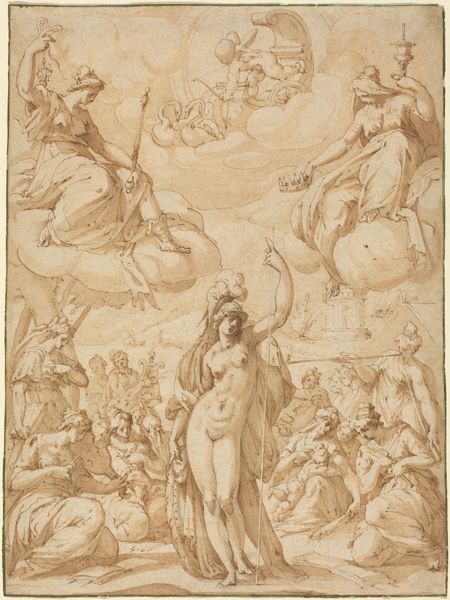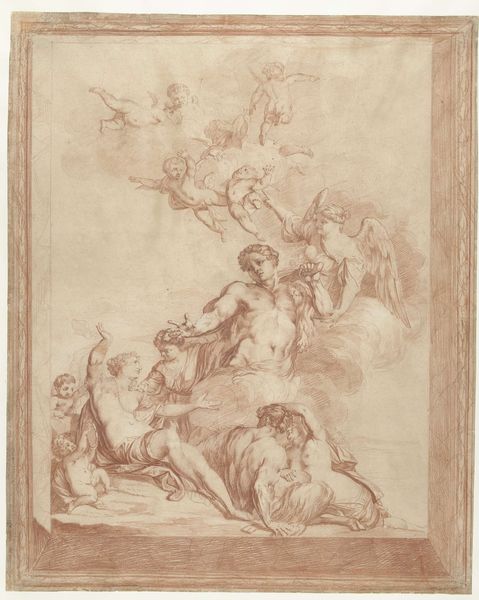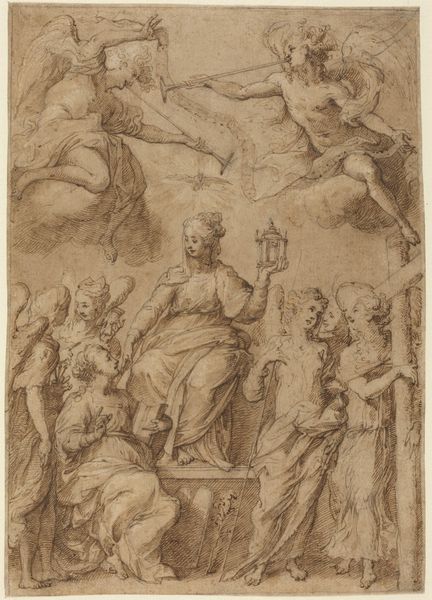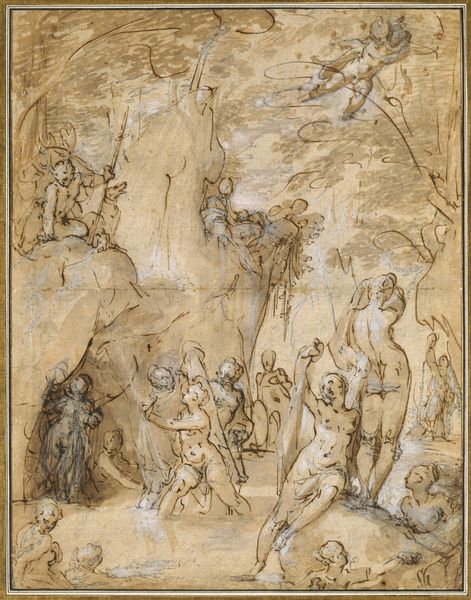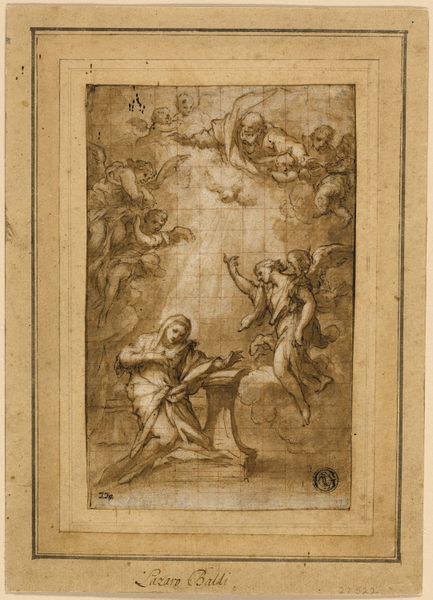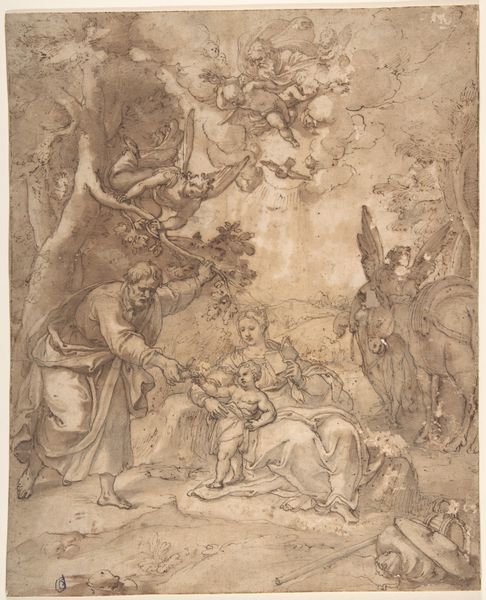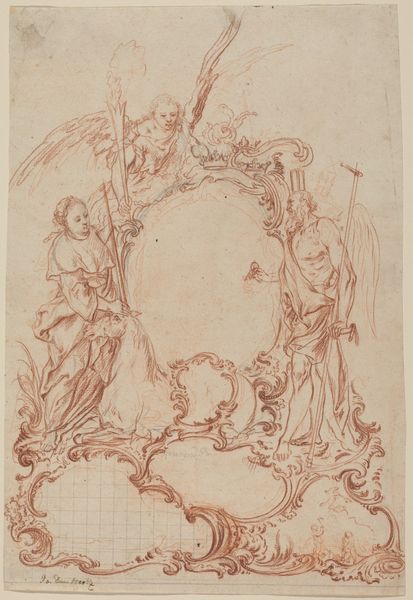
drawing, tempera, ink
#
drawing
#
allegory
#
ink painting
#
tempera
#
figuration
#
ink
#
history-painting
#
italian-renaissance
Dimensions: sheet: 34.1 x 22.4 cm (13 7/16 x 8 13/16 in.)
Copyright: National Gallery of Art: CC0 1.0
Editor: This is "The Assumption and Coronation of the Virgin," a drawing in ink and tempera by Matthäus Gundelach from before 1615. The rendering of the scene feels almost dreamlike. What strikes me is the level of detail, but in such a simple color palette, like a detailed sketch or even blueprint. How do you interpret this work? Curator: The delicate materials – ink and tempera – speak volumes. Consider the laborious, almost devotional process of creating such detail. Gundelach's choice isn't just aesthetic; it reveals a system of production, a material language. It resists the opulence often associated with religious art, highlighting the manual effort, and therefore the cultural cost of portraying this vision. The act of drawing becomes paramount, mediating the divine for the viewer. Do you see how the line weight impacts the ethereal quality, creating a hierarchy within the celestial scene? Editor: I see it now – it’s almost like he’s showing the bones of the artwork before paint can be added. So, he's using these more basic, "lesser" materials like ink to explore high art? Curator: Exactly. This piece blurs the line between ‘sketch’ and ‘finished work,’ challenging the hierarchy between drawing and painting, between craft and high art. What might have been dismissed as preliminary work becomes the site of artistic and cultural meaning itself. This deliberate exposure of process redirects our attention to the labour, skill, and the value we place on material hierarchies. Editor: So by focusing on the materials and labor, Gundelach invites us to reconsider what makes something “art,” not just what it depicts. It certainly does prompt one to question the social context and production of art in his era. Thank you. Curator: Indeed. Seeing art through the lens of its materiality opens up a new dimension of understanding – one where process, labor, and cultural context converge.
Comments
No comments
Be the first to comment and join the conversation on the ultimate creative platform.
